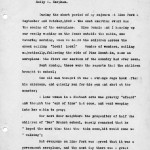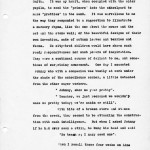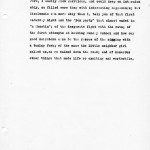Pine Mountain Settlement School
Series 09: BIOGRAPHY – Staff
Emily C. Harpham, Teacher, Sept & Oct 1920
Coyl Branch School at Line Fork Settlement
Emily C. Harpham (1873-1965)
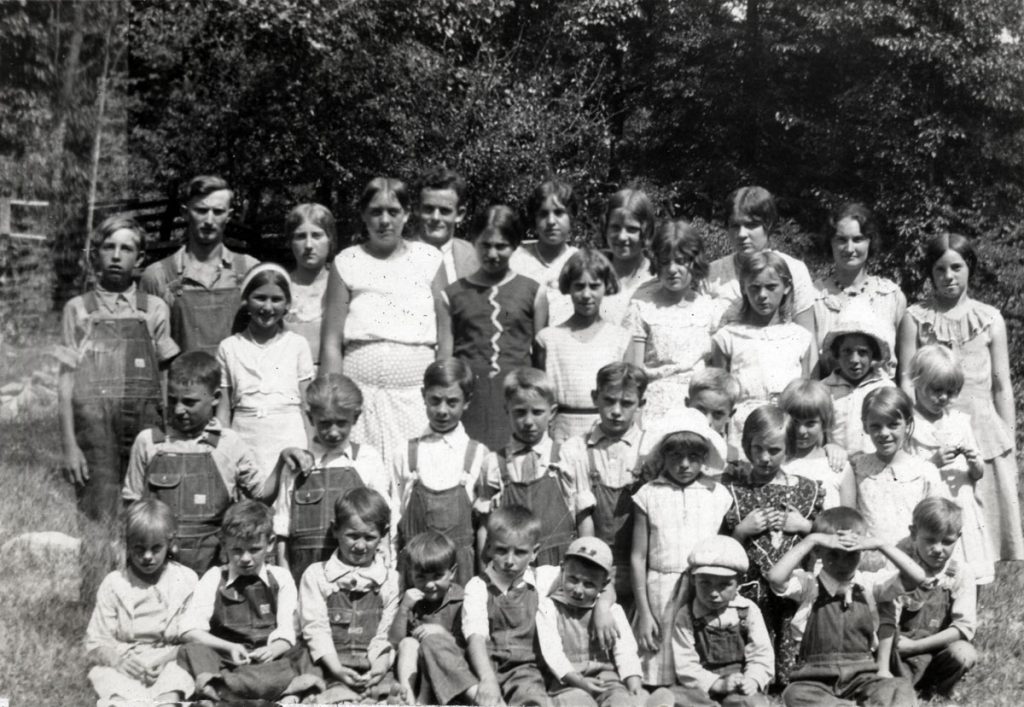
1424 Coil [Coyl] Branch School. 045_VI_FN_pg2_013
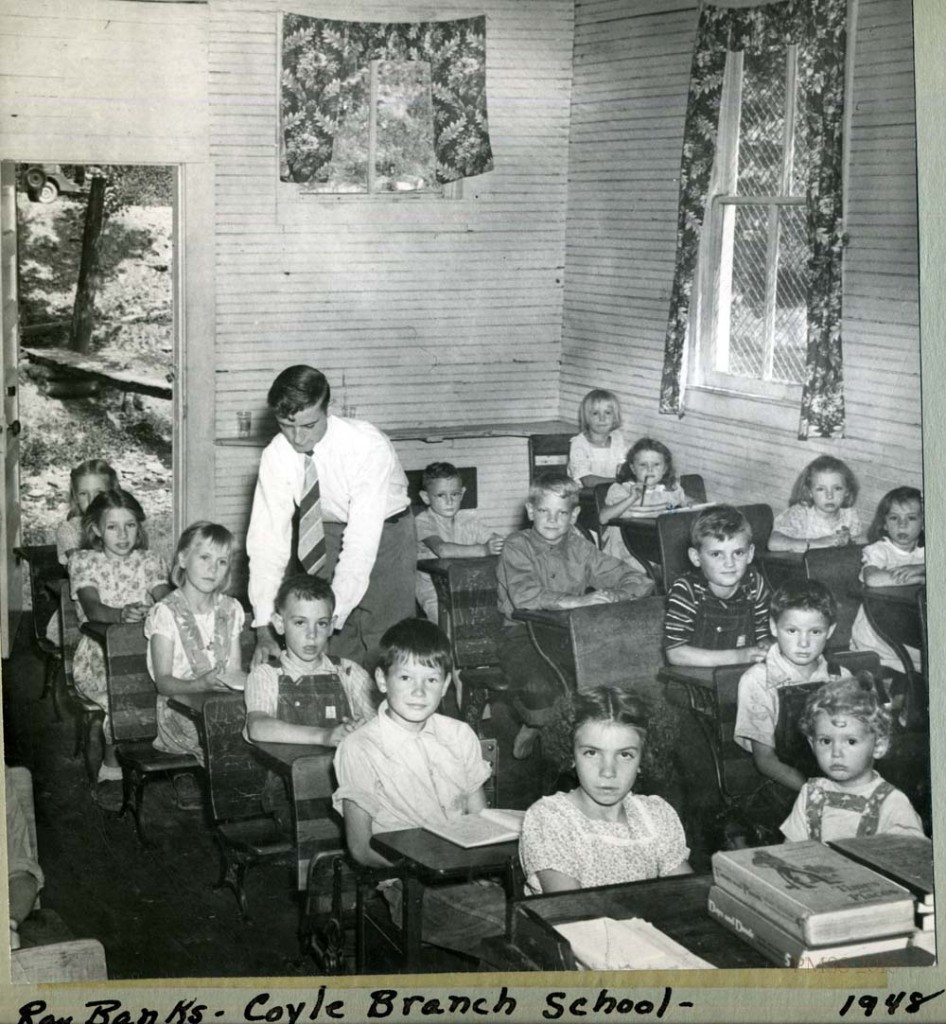
“Roy Banks – Coyle Branch School – 1948.” Children at desks with teacher. [nace_II_album_028.jpg]
TAGS: Emily C. Harpham, teachers, Line Fork Settlement, Martha Van Meter, Isabel McLennan McMeekin, Coil (Coyle) Branch School, extension centers, Ruth Dennis, Industrial Workers, one-room schools, aeroplanes, William Harpham
EMILY C. HARPHAM Staff
Teacher, Coyle Branch School, Line Fork Settlement
September & October 1920
Emily C. Harpham was a teacher at the Line Fork Settlement. She arrived in September of 1920, the same year as Martha Van Meter and Isabel McLennan [McMeekin], two other teachers who were the first hired at Line Fork in July of 1920. The three women, the first staff at the new extension center in 1920, did not arrive at the same time but came as a series of hires. These women were soon joined by Ruth Dennis, the Industrial Worker, in Fall of the same year.
Emily Harpham’s stay at Line Fork was very brief, only six weeks in part of September and October. She was charged with providing classroom instruction in the Coil (Coyle) Branch school. The schools in the Line Fork area were typically one-room schools with all eight grades taught by the same instructor. The Line Fork situation was more difficult than many of the small schools in the area, as the student population was very erratic and often seasonal. The access to basic tools, sanitary conditions, heat and water, and other necessities were poor, at best.
Like Van Meter and McLannan, Emily, as an educator, was daily challenged by the conditions in the region. She had been well prepared and tried to meet the children where they were in their educational processes. However, she was trying to educate under the most primitive conditions imaginable. As her narrative indicates, she found the children delightful and imaginative. Her comments on the creativity of the children at the Coil (Coyle) Branch school are full of hope and surprise.
Her reasons for leaving are not clear. Four weeks is hardly enough time to begin to make connections with the Line Fork culture, but consistent with the brief time of most of the early teachers. The children had only a small window in which to attend school, as the crops required the whole family. Consequently, work in the fields took precedence over work in the classroom for most families. This may be why her selection of the single incident of the “aeroplane” at Line Fork as her narrative focus is of consequence. It suggests she had little time to make memorable personal connections and only a few incidents find their way into her account. She defers to Ruth Dennis to fill in the cultural gaps and her narrative concludes after only about two and a half pages.
*********
Emily C. Harpham was born March 6, 1873, in Cuyahoga County, Ohio, the daughter of William and Annie (Bates) Harpham. She graduated from an Akron, Ohio, educational training program and was a member of the Ohio Education Association. [Ohio Educational Monthly (Ohio Education Association)].
She died on April 14, 1965, and was buried in East Akron Cemetery. Little else is known of her life, but much may be inferred from her reflections on her brief time at the Line Fork Settlement.
TRANSCRIPTION: Narrative by Emily C. Harpham
[NOTE: The following text has been slightly edited for clarity.]
Page 1
THE AEROPLANE COMES TO LINE FORK.
Emily C. Harpham.
During the short period of my sojourn at Line Fork – September and October, 1920 – the most exciting event was the coming of the aeroplane. Miss Dennis and I [were] hanging up our weekly washing on the fence outside the cabin, one Saturday morning, when we heard the children across the creek calling “Look! Look!” Wonder of wonders, sailing majestically, following the [ridge] of Pine Mountain, came an Aeroplane – the first our section of the country had ever seen.
Next Monday, these were the reports that the children brought to school;
One old man thought it was a strange huge hawk after his chickens, and quickly ran for his gun and shot at the monster;
A lone woman in a distant cove was greatly “afeard” and thought the “end of time” had come, and went weeping into her cabin to pray;
Our next door neighbor – the progenitor of half the children of “Bar” Branch school, sagely remarked that he hoped the next time that thar thin come, hit would come a- walking”;
But everyone on Line Fork was agreed that it was a government aeroplane, and the next day there was a great moving of stills throughout the whole countryside.
Writing of stills, reminds me of little Johnny
Page 2
Smith. It was my habit, when occupied with the older pupils, to send the “primers” into the schoolyard to make “pretties” in the sand. It was marvelous to me the way they responded to a suggestion to illustrate a nursery rhyme, like the one about the mouse and the cat and the stone wall; or the beautiful designs of their own invention, made of autumn leaves and berries and ferns. No city-bred children would have shown such ready responsiveness nor such powers of inspiration. They were a continual source of delight to me, and some- times of surprising amusement. One day I accosted Johnny who with a companion was busily at work under the shade of the schoolhouse corner, a little detached from the other eager workers.
“Johnny, show me your pretty”.
“Teacher, we just reckoned we wouldn’t make no pretty today; we’re makin er still”.
With bits of a broken stove and stones from the creek, they seemed to be attacking the construction with much intelligence. But when I asked Johnny if he had ever seen a still, he hung his head and said
“No, teacher; I nary seed one”.
When I recall those four weeks on Line
Page 3
Fork, I easily grow garrulous, and could keep on interminably, so filled were they with interesting happenings; but Miss Dennis can more ably than I, tell you of that first Saturday night and the “Box party” that almost ended in “a Shootin”; of the desperate fight with the rats; of the first attempts at holding Sunday School and how our good neighbors came to the rescue of the singing with a tuning fork; of the name the little neighbor girl called us, as we walked down the road; and of numerous other things that made life so exciting and worthwhile.
GALLERY: “THE AEROPLANE COMES TO LINE FORK” by Emily C. Harpham
- Narrative by Emily C. Harpham, 1920, p. 01. [mcmeekin_026_harp_1.jpg]
- Narrative by Emily C. [mcmeekin_027_harp_2.jpg]
- Narrative by Emily C. Harpham, 1920, p. 03. [mcmeekin_028_harp.jpg]
See Also:
PUBLICATIONS RELATED 1920 “A DAY IN A KENTUCKY MOUNTAIN SCHOOL“
by Emily C. Harpham
Emily C. Harpham writes of her experiences as a teacher for PMSS’s Line Fork Settlement. Her article appeared in the December 17, 1920, College Club of Akron Bulletin, a club that seeks to “Promote the interests of the college bred women in Akron and vicinity, and to arouse interest in college work.”
|
Title |
Emily C. Harpham |
|
Identifier |
|
|
Creator |
Pine Mountain Settlement School, Pine Mountain, KY |
|
Alt. Creator |
Ann Angel Eberhardt ; Helen Hayes Wykle ; |
|
Subject Keyword |
Emily C. Harpham ; Pine Mountain Settlement School ; Emily C. Harpham ; teachers ; Line Fork Settlement ; Martha Van Meter ; Isabella McLannan [McMeekin] ; Coil (Coyle) Branch School ; extension centers ; Ruth Dennis ; Industrial Workers ; one-room schools ; aeroplanes ; William Harpham ; Annie Bates Harpham ; Ohio Education Association ; Ohio Educational Monthly ; East Akron Cemetery ; Pine Mountain, KY ; Harlan County, KY ; Line Fork, KY ; Cuyahoga County, OH ; |
|
Subject LCSH |
Harpham, Emily C., — March 6, 1873 – April 14, 1965. |
|
Date |
2013-11-25 |
|
Publisher |
Pine Mountain Settlement School, Pine Mountain, KY |
|
Contributor |
n/a |
|
Type |
Collections ; text ; image ; |
|
Format |
Original and copies of documents and correspondence in file folders in filing cabinet |
|
Source |
Series 09: BIOGRAPHY – Staff. |
|
Language |
English |
|
Relation |
Is related to: Pine Mountain Settlement School Collections, Series 9: Staff/Personnel and Series 14B: Medical — Line Fork Settlement |
|
Coverage Temporal |
1873 – 1965 |
|
Coverage Spatial |
Pine Mountain, KY ; Harlan County, KY ; Line Fork, KY ; Cuyahoga County, OH ; |
|
Rights |
Any display, publication, or public use must credit the Pine Mountain Settlement School. Copyright retained by the creators of certain items in the collection, or their descendants, as stipulated by United States copyright law. |
|
Donor |
n/a |
|
Description |
Core documents, correspondence, writings, and administrative papers of Emily C. Harpham ; clippings, photographs, books by or about Emily C. Harpham ; |
|
Acquisition |
n/d |
|
Citation |
“[Identification of Item],” [Collection Name] [Series Number, if applicable]. Pine Mountain Settlement School Institutional Papers. Pine Mountain Settlement School, Pine Mountain, KY. |
|
Processed By |
Helen Hayes Wykle ; Ann Angel Eberhardt ; |
|
Last Updated |
2013-11-25 hhw ; 2013-12-12 aae ; 2017-03-14 aae ; 2023-10-15 aae ; |
|
|
Sources “Emily C. Harpham (1873 – 1965).” Find A Grave. http://www.findagrave.com/cgi-bin/fg.cgi?page=pv&GRid=31432940 (accessed 2013-12-12). Internet resource. “Guide to PMSS Workers.” Series 09: BIOGRAPHY – Staff. Pine Mountain Settlement School Institutional Papers, Pine Mountain, KY. Internet resource. Harpham, Emily C. “The Aeroplane Comes to Line Fork.” Narrative. Series 09: BIOGRAPHY – Staff. Pine Mountain Settlement School Institutional Papers, Pine Mountain, KY. Archival material. Ohio Educational Monthly. Ohio Education Association. http://www.archive.org/details/ohioeducational01unkngoog (accessed 2013-12-12). Internet resource. |
Return To:
BIOGRAPHY – A-Z
LINE FORK SETTLEMENT WORKERS Reports Publications Guide 1920-1941
PUBLICATIONS RELATED Guide

